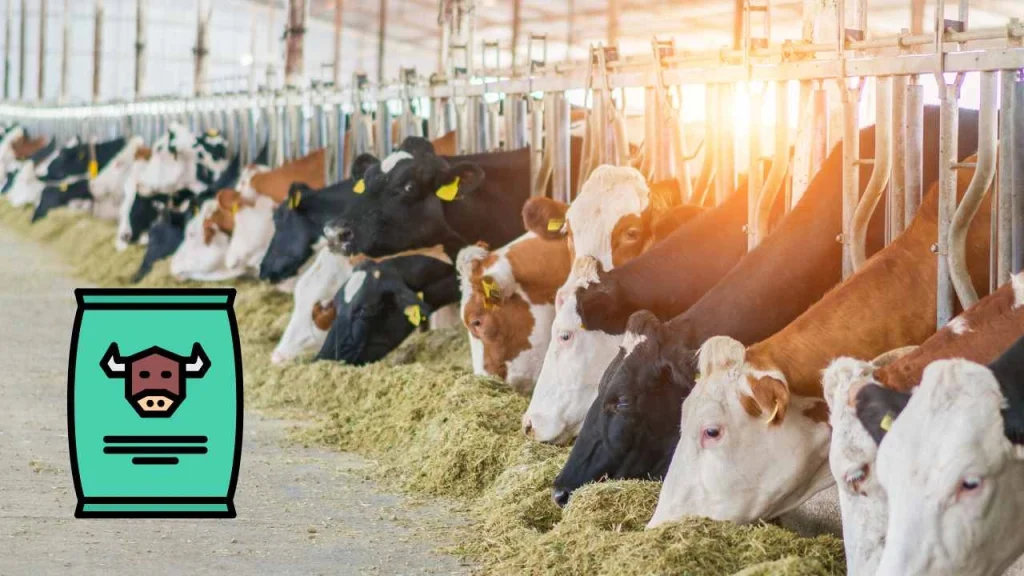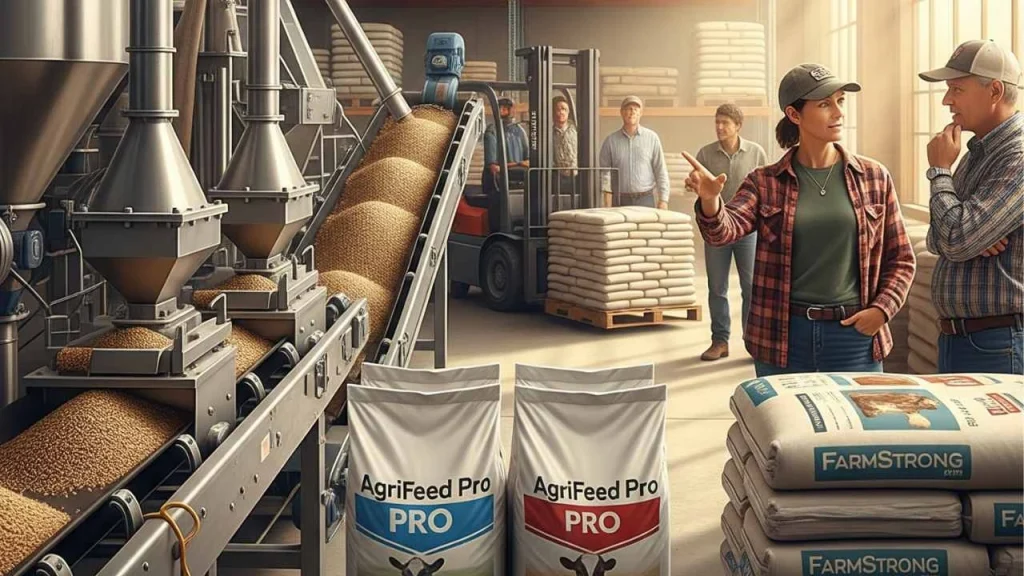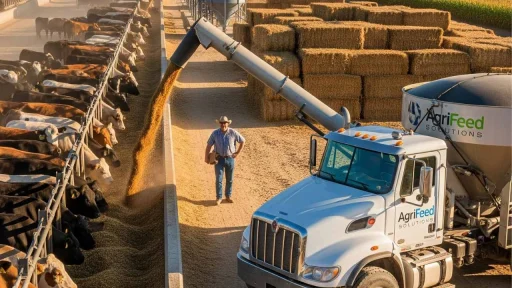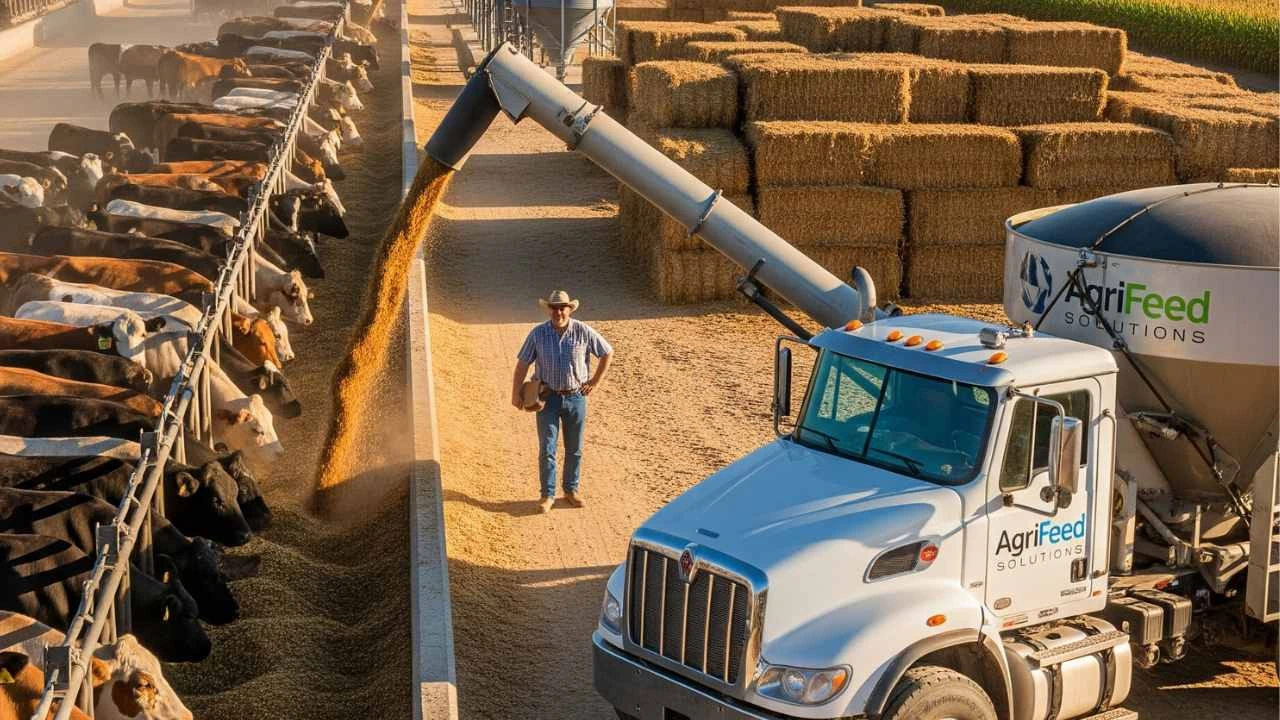Cattle feed is a major part of agriculture and the livestock industry. The industry plays an important role in the dairy, meat and farming industries. This industry produces balanced, nutritious feed for cows, calves, bulls and buffalos.
Scientific and commercial feed has replaced traditional methods of feeding cattle over the years. To produce high-quality feed using natural ingredients and formulas, Animal nutritionists and machines are important.

The Cattle Feed industry: Raw Materials For Production
For the production of cattle feeds, collect various raw materials. The nutritional value of these ingredients is important when selecting them. Raw materials include:
- Grains such as maize, barley and broken rice
- Oil Cakes, such as soybean cake, cottonseed cake and groundnut cake
- Bran, like rice bran or wheat bran
- Minerals and Vitamins For Animal Health
- Salt for digestion
- Molasses to taste and for energy
The ingredients are then cleaned, dried and ground. They are then mixed together in predetermined proportions. They are then processed into various forms of animal food.
Cattle Feed Industry: Types Of Production
It is produced in a variety of forms, depending on age, breed, and use. Cattle feed comes in many forms.
- Compound Feed: It is available in pellet or powder form. This is fed to cattle and buffaloes in order to increase milk production.
- Calf Starter: It is given to calves as a growth aid.
- Mineral Mixture: Regular feed is supplemented with special minerals such as calcium, phosphorus and salt to enhance animal health.
- Bypass Protein Feed: The feed passes through the rumen, and is absorbed directly in the intestinal tract. This helps to increase milk production.
- Urea Molasses Mineral Blocks (UMMB): The blocks can be used to provide nutrition in areas that are dry or experiencing drought.
Cattle Feed Production Guide
Feed mills are where the cattle feed is manufactured. The process includes:
- Cleaning: The raw materials are thoroughly cleaned, removing stones and other foreign material.
- Grinding: The powdered ingredients make it easy to mix and digest.
- Mixing: Machines are used to mix nutrients evenly.
- Conditioning: Heat or steam is used to enhance digestibility and shelf-life.
- Pelleting or Bagging: It is then packed in bags as powder or pellets for transport and storage.
Before distribution, test each batch to ensure its quality and safety.
Related Article: Strategic Role of Zinc and Copper in Animal Nutrition: Why Every Feed Formulation Must Include Trace Elements
Cattle Feed Industry: Importance
It is important to dairy and livestock farmers that the cattle feed industry exists. The benefits of the cattle feed industry include:
- Increased milk production: Nutritional feed makes dairy animals produce more milk
- Growing faster: The young animals are growing stronger and more quickly
- Resistance to Disease: The animals become more healthy and resistant to diseases
- Increased Profits: Better productivity allows farmers to earn higher profits
- Balanced nutrition: feed is designed to meet all the dietary requirements of animals
Due to these advantages, it is preferable that cattle feed be fed instead of traditional methods such as grass or kitchen scraps.
Read Our Book On ‘Cattle & Poultry Feed‘
Cattle Feed Industry: Role In Supporting Farmers
Livestock is a vital part of the livelihoods for millions. Animals produce more when they are fed well. The cattle feed industry provides:
- Accessible and affordable feed products
- Animal Nutrition Guidelines
- Programs for training in proper nutrition
- Rural and semi-urban employment
- Feed sellers and carriers can expect a steady stream of income
This industry also supports rural development.
Want To Know About Which Business Idea Would Be Better For You?
Go Through Our Startup Selector Tool
Cattle Feed Industry: Environmental Impacts
If not properly managed, the cattle feed industry may have an adverse effect on the environment. Many eco-friendly measures are being taken now:
- Use the waste from the agriculture in animal feed
- Better processing methods can minimize the use of water
- Reusable bags reduce packaging waste
- Modern feed mills use energy-efficient machines
- Local and natural ingredients can reduce Carbon footprint

Demand And Market Growth
Demand for feed increases due to:
- The dairy and meat industry is growing
- Animal nutrition is increasing awareness
- Support for the development of livestock by government
- Demand for meat, milk, ghee and cheese in urban areas
The cattle feed industry is a sector that has seen large investment in India, Brazil and the USA as well as many African nations.
Read Our Project Report: Click here
Cattle Feed Industry: Key Challenges
Despite the growth of this industry, there are still challenges to face.
- Shortage of raw materials: The prices of grain and oilcakes are increasing
- Lack of awareness: Small farmers continue to use old-fashioned methods
- Issues with Quality Control: Local feeds are unsafe and poorly produced
- Problems with distribution: It is not easy to reach rural areas
- Fake and Adulterated Products: Sometimes businesses mix harmful substances to make money
Cattle Feed Industry Innovation And Technology
The use of new technologies to enhance feed quality and production:
- Automated feed plants to produce faster and more hygienically
- Nutritional software for designing custom feed
- Apps for mobile ordering and support of farmers
- GPS tracking to track delivery and the supply chain
- Digital Weighing and Testing Machines to improve quality control
These innovations make the agricultural industry more efficient, and they are also farmer-friendly.

Conclusion
Cattle feed is a growing industry that helps millions of farmers. The industry supports animal welfare, boosts production and creates jobs. As more and more people consume dairy products and meat, demand for nutritional cattle feed is rising.
The industry will be stronger with better technology, increased farmer awareness and improved quality control. By selecting high-quality feed for their livestock, farmers will be able to increase their income.
The agricultural industry has a vital role to play in rural economies around the globe.
The Cattle Feed industry: FAQ (Frequently Asked Questions)
Q1: Does cattle feed have a better nutritional value than conventional feed?
A: Cattle feed improves the production of milk and meat.
Q2: Can you make cattle feed at home?
A: Although farmers produce small amounts of feed at home, it is difficult to ensure quality and balance.
Q3: How long does cattle feed last?
A: If stored properly in a cool, dry place, most cattle feed will last 3 to 6 month.
Q4: Is there a government subsidy for the production of feed?
A: In many countries, there are subsidies for machinery and feed factory equipment.
Q5: What are the steps to start a business selling cattle feed?
A: Businesses can launch small units with basic equipment, raw materials and minimal investment. Local agriculture offices and banks can provide support.







